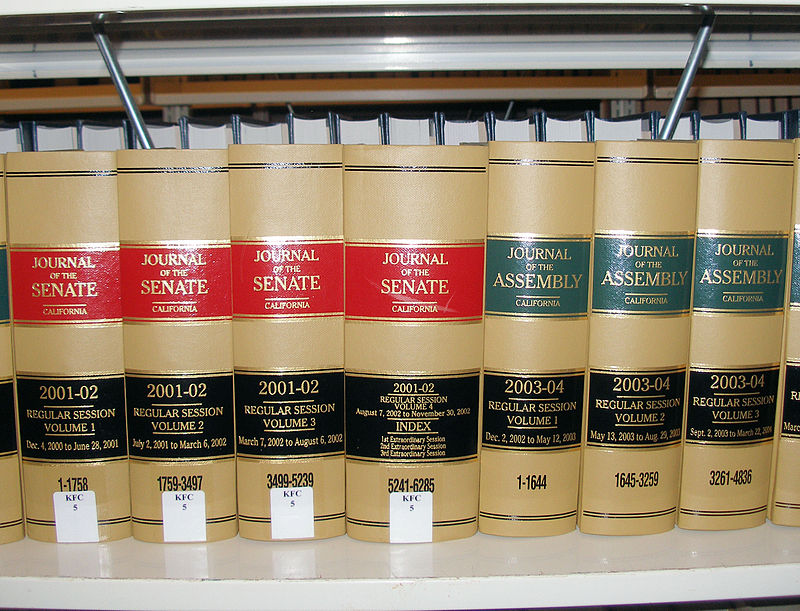
West's Legal Forms. (Photo: ebay)
The Use of Definitions in Legislation
Definitions of words and phrases play an important part in statutes
By Chris Micheli, November 6, 2020 6:31 am
Definitions can play an important role in legislation. Defining words or phrases is done to provide the reader of the legislative text with clear guidance regarding how those words or phrases are to be understood. Where there are multiple definitions, they are most often found near the beginning of legislative text.
This is because it makes them easier to find for the reader and instructs the reader how these words or phrases should be used when reading the remainder of the statutory provisions. In some jurisdictions, such as the United Kingdom, definitions are actually placed at the end of the legislation pursuant to their parliamentary practice.
According to the Athabasca University’s Graduate Diploma in Legislative Drafting program, “essentially, definitions can perform two different functions: labelling and stipulating.” A labelling definition’s purpose is to allow the term to be used instead of a longer sentence that sets forth the definition repeatedly throughout the legislative text. A stipulating definition’s purpose is to provide a specific meaning for the defined term or phrase as it is to be used in the legislation.
For purposes of drafting definitions in legislation, bill drafters are to obviously follow the drafting guidelines of their jurisdiction, but much of this area is common among the states. Drafters generally develop definitions in the planning stage of preparing legislation to draft when they anticipate certain words or phrases will need to be defined, as well as when they are actually drafting because they have determined that a definition would help explain a word or phrase used in the legislative text.
In some legislation, there is an entire definitions section, which often begins with an introductory phrase such as: “For purposes of this chapter (or act, or section), the following definitions apply:” Another example from California law is: “For purposes of this article, the following terms have the following meanings:”
Thereafter, the word or phrase is defined, with that word or phrase in quotation marks according to California’s drafting style. In some jurisdictions, boldface or italics are instead used for the word or phrase that is being defined. The word or first word of a phrase is not usually started with a capital letter and does not include a definite (“the”) or indefinite (“a” or “an”) article.
What are the types of definitions commonly found in legislation? A comprehensive definition includes a complete statement of what the defined term means. It is concise and includes the entire definition. An example in California law would be: “(b) “Contractor” means an individual, business, or other entity doing business with an agency.”
A restricting definition limits the use of a term to the specific context of the particular legislation. An example in California law would be: “(6) “Patient information” shall mean identifiable private information, protected health information, individually identifiable health information, or medical information.”
An enlarging definition is intended to extend the usual definition of a word. An example in California law would be: “(k) “Commercial cannabis activity” includes the cultivation, possession, manufacture, distribution, processing, storing, laboratory testing, packaging, labeling, transportation, delivery, or sale of cannabis and cannabis products as provided for in this division.”
Another example from California law is: “(p) “Delivery” means the commercial transfer of cannabis or cannabis products to a customer. “Delivery” also includes the use by a retailer of any technology platform.” Another example from California law would be: “(c) “Protective hairstyles” includes, but is not limited to, such hairstyles as braids, locks, and twists.”
An excluding definition is used to remove something from the usual meaning of a word or phrase. An example in California law would be: ““Employer” does not include a religious association or corporation not organized for private profit.” Another example from California law would be: “(f) “Essential functions” means the fundamental job duties of the employment position the individual with a disability holds or desires. “Essential functions” does not include the marginal functions of the position.”
A referential definition utilizes a defined term in another area of statutory law by specifically referring to that particular definition and where it is found in the law. An example in California law would be: “(a) “Agency” has the same meaning as in subdivision (b) of Section 1798.3 of the Civil Code.”
As a general rule of legislative drafting, for a comprehensive definition, the drafter should use the word “means.” The word “includes” is not usually viewed as creating a comprehensive definition. Drafters should never use the phrase “means and includes”. In addition, a definition is usually not required to merely repeat a dictionary definition. Judges expect a definition to be needed when the common dictionary term is not being used.
Definitions of words and phrases play an important part in statutes, particularly where these words or phrases are not used in their common, ordinary manner. When a drafter defines a term in a legislative text, then the defined word or phrase must be used in that same manner throughout the text of the statute.
- Offenses Under the State Contract Act - November 21, 2024
- California Levying Officer Electronic Transactions Act - November 21, 2024
- 2023-24 California Legislative Session: A Look at Regular Session Bills - November 20, 2024



